It's showtime for the King of the Rings! Time to get your telescope out to see and share Saturn, which comes to opposition this week.
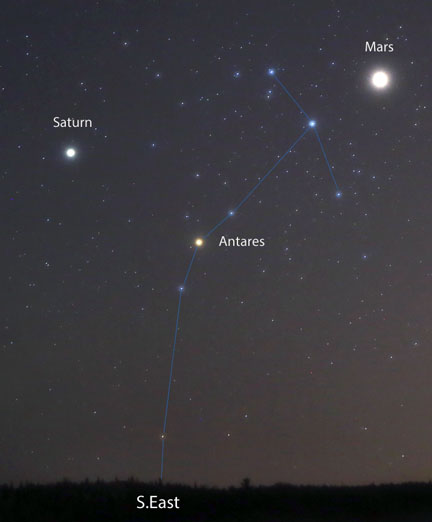
Bob King
I've just stepped inside after looking at the magnificent southern sky tonight. Mars, Saturn, and Antares are gathered near the head of Scorpius in a glittering triangle of celestial shimmer. Only last week, Mars reached opposition to Earth. Now it's Saturn's turn.
On Thursday night June 2–3, we'll see the ringed planet at its closest, brightest, and largest for the year.
It's not often that two bright planets come to opposition only days apart. This last happened when Jupiter and Saturn joined forces in Taurus in late 2000. But you'd have to time-machine back 32 years ago, to May 1984, to find Mars and Saturn paired up again — in Scorpius no less!
For the naked-eye observer, the current opposition provides a chance to witness a vivid demonstration of the magnitude scale used to measure the brightness of celestial objects. At the moment, Mars shines at magnitude –2.0, exactly two magnitudes brighter than Saturn's 0.0, while the ringed planet outshines Antares (mag. +1.0) by exactly one magnitude.
While most of us can easily see Mars's fiery hue, have you ever noticed Saturn's color? At first glance it might look white, but a careful comparison with stars such as Spica and Vega will reveal its warmer tone — pale lemon to my eyes. 25× might be the minimum magnification needed to distinguish the rings from the planet's globe, but even 8× binoculars clearly show Saturn out of round, especially when the rings are tipped wide open as they are this apparition.
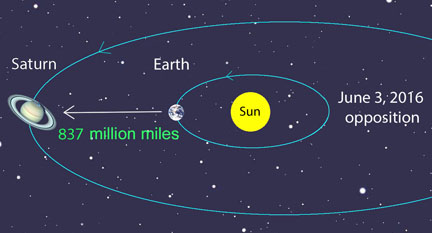
Bob King
The rings give Saturn a lot of visual firepower. This season, their north face is tilted 26° in our direction, near the maximum, boosting the planet's brightness a full magnitude compared to when they present edgewise to us.
Even in a small telescope they never fail to elicit a wow, yet much depends upon the steadiness of the atmosphere. For many northern hemisphere observers this season, the planet's southerly declination can mean contending with poor seeing.
From my location in northern Minnesota, Saturn climbs no higher than 22° and often throbs and blurs in thick, turbulent air. I can't complain too much. Now that the weather's pleasant, it's an easy thing to set up the telescope every clear night in hopes of scoring a precious hour when the air calms and Saturn becomes positively transcendent.
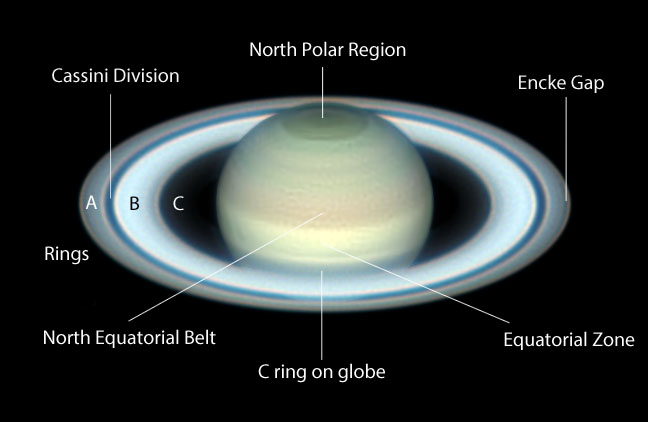
Michael A. Phillips
On those evenings, you'll be tempted to abandon sleep. Don't hesitate to do so. The next tranquil night could be a week away!
Saturn's so much about rings, so let's begin there. Composed primarily of water ice, they appear brighter and whiter than the planet's honey-colored globe. Three are usually visible: A, B, and C. Ring B, the widest and brightest, is separated from ring A by the Cassini Division, a dark gap slightly wider than the width of the continental United States. In good conditions, you can follow the division completely around the planet, but beware. The planet's shadow spills into the gap on the far side. Can you tell which is which?
Ring C is the trickiest because it’s translucent and most affected by Saturn's glare. Look for gauzy, veil-like arcs that partially fill the gap between the disk and B ring. You can also see the ring as a narrow, gray band where it passes in front of the globe using the photo as your guide.

Christopher Go
Right now, the rings should appear extra bright due to the Seeliger Effect, also referred to as the "opposition surge." For a short time around opposition, as Earth lines up with Saturn with the Sun at our back, each individual chunk of ice in the rings hides its shadow, contributing to their overall brightening.
The effect was first studied by German astronomer Hugo von Seeliger (1849-1924) who proposed that the rapid brightening of the rings (not the globe) around opposition confirmed that the rings were made of individual moonlets, each casting a shadow, rather than a series of solid disks, a popular theory at the time. The Seeliger phenomenon is further enhanced by dusty ring particles backscattering sunlight the way highway signs suddenly light up at night when struck by automobile headlights.
Here are some other fascinating Saturn sights to look for:
* Can you trace the rings completely around the planet? Last year, they barely poked above the far side limb. This season, we should see their full circumference.
* Saturn's cloud belts, muted by high-altitude haze, are much harder to make out compared to Jupiter's, but the North Equatorial Belt should be fairly obvious at medium to high magnifications. Ditto for the North Polar Region.
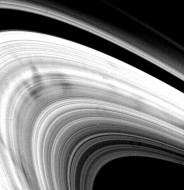
NASA / JPL-Caltech
* If you have a 12-inch or larger telescope, try to ferret out the thread-thin Encke Gap, located just inside the outer edge of the A ring. Very rarely, sharp-eyed amateurs with large telescopes might glimpse dark spokes that occasionally cross the B ring and are thought to be caused by sheets of electrically-charged fine dust.
With Jupiter, most observers see four moons, but Saturn doubles that number depending on the size of your telescope. A 60-mm spyglass will easily nab the largest, Titan, which shines at +8.5 magnitude. In a 6-inch, four more come into view in order of decreasing brightness: Rhea, Dione, Tethys, and Iapetus.
The last, Iapetus, has both dark and light hemispheres and varies from 10th magnitude at western elongation to 12th magnitude at eastern elongation with a period of 79 days. I've included a map (below) to help you to find it through July. If you want to track this oddball moon any night of the year, use a computer sky-mapping program. For the other brighter Saturnian satellites, check out Sky & Telescope's online Saturn's Moons utility or download the smartphone app.
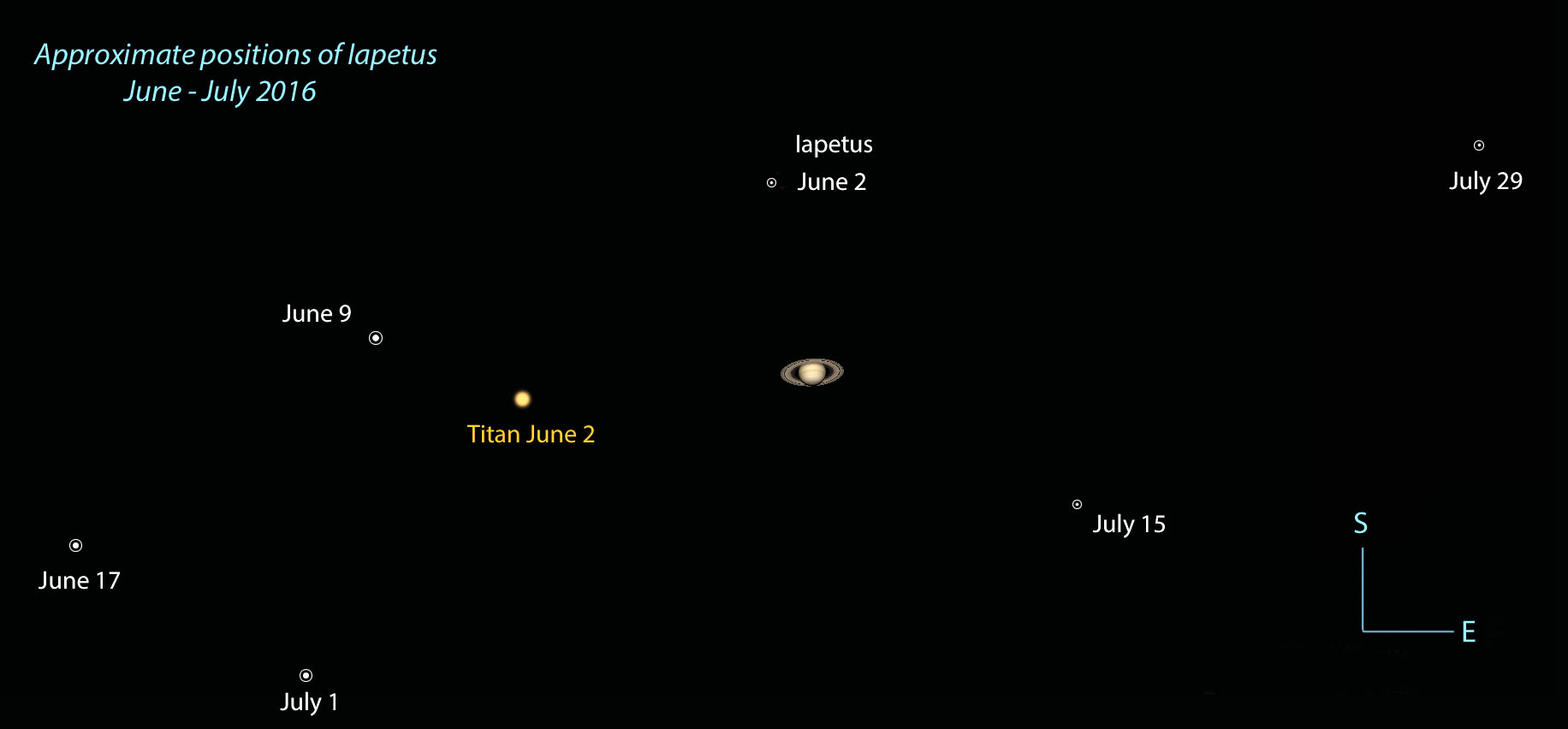
Bob King, Source: Stellarium
A 10- to 12-inch scope adds Enceladus, Hyperion, and the seriously-difficult Mimas. Saturn offers challenges at all levels. Take the bait and have some fun on these fine nights before the mosquitoes make you wish for fall. And don't forget to share the ringed planet with family, friends, and neighbors. No one walks away from Saturn untouched.
Explore Saturn and its moons in our free Saturn's Bounty ebook! Enter your email to download the PDF and receive our weekly e-newsletter with the latest news from the world of astronomy.
[form id="246614209"]
 3
3









Comments
June 8, 2016 at 4:48 pm
I would be happy if Saturn climbed 22dgr in my sky. Purchased a Skymax 7" maksutov last friday. Have not been able to see Cassini division due to low altitude only 13 dgr at max elevation!!
You must be logged in to post a comment.
SNH
June 9, 2016 at 4:16 pm
I read your article and was glad you included Hyperion and Enceladus as moons possibly visible in 10- to 12-inch. I say this because afterwards, I went out and was just barely able to spot Enceladus in my 10-inch telescope for the first time (like I said, I had forgotten about it). The seeing that night was very good and gave me a super-crisp image of Saturn. So good in fact, I could also trace the Cassini Division all the way around the planet! And hey, I challenge anybody to try and spot Titan in a smaller aperture then a 60mm spyglass. I just did it while it was at its closest visual approach to Saturn in 8x56 binoculars. I have to admit though that Saturn gets 31 degrees up here. Keep those intriguing articles coming Mr. King!
You must be logged in to post a comment.
Bob KingPost Author
June 9, 2016 at 8:21 pm
Thanks SNH - will do! Titan in 8x56s. Nice. Well done, sir. I don't know many people who would have even thought to try and see in binoculars.
You must be logged in to post a comment.
You must be logged in to post a comment.